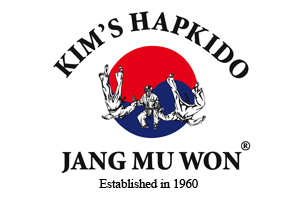Welcome to Kim’s Hapkido!
At Kim’s Hapkido, we teach Jang Mu Won Hapkido which was founded by Grandmaster Chong Sung Kim. Jang Mu Hapkido emphasizes timing and precision in the execution of techniques with great devotion to detail. Grandmaster has often stated that the difference between mediocre technique and outstanding, effective technique is paper thin. Jang Mu Won Hapkido teaches techniques that are readily applied by students in any situation.
Contact Kim’s Hapkido for Dojo, Hapkido, Karate, Karate Classes For Kids, Kickboxing, Martial Arts, Self Defense, Self Defense Classes, Self Defense For Women, and Taekwondo. Proudly supporting the areas of Alhambra, Altadena, Arcadia, Glendale, Los Angeles, Pasadena, San Gabriel, San Marino, South Pasadena, Yucaipa and surrounding areas.
CONTACT US TODAY FOR MORE INFORMATION
Contact Kim’s Hapkido for Dojo in South Pasadena, Hapkido in South Pasadena, Karate in South Pasadena, Karate Classes For Kids in South Pasadena, Kickboxing in South Pasadena, Martial Arts in South Pasadena, Self Defense in South Pasadena, Self Defense Classes in South Pasadena, Self Defense For Women in South Pasadena, Taekwondo in South Pasadena, and in surrounding areas.
Below is some general information about South Pasadena:
South Pasadena is a city in Los Angeles County, California, United States. As of the 2010 census, it had a population of 25,619, up from 24,292 at the 2000 census. It is located in the West San Gabriel Valley. It is 3.42 square miles in area and lies between the much larger City of Pasadena, of which it was once a part, and the metropolis of Los Angeles. South Pasadena is the oldest self-builder of floats in the historic Tournament of Roses Parade. South Pasadena is located at the western end of the San Gabriel Valley, north of the San Rafael Hills, east of the Arroyo Seco seasonal river, and south of the separate city of Pasadena, California. Adjacent cities are Los Angeles to the west and south, Pasadena to the north, San Marino to the east, and Alhambra to the southeast. According to the United States Census Bureau, the city’s total area of 3.42 square miles, is virtually all land. South Pasadena is located at 34°6′47″N 118°9′21″W.
South Pasadena’s streets are lined with numerous species of native California trees. These include redwood, sequoia, ash, walnut, and sycamore. Some non-native trees, such as sweetgum, are also seen. Because there are very few stucco-clad Spanish Colonial houses and virtually no palm trees in some parts of the city, South Pasadena is a popular stand-in for Midwestern and Northeastern towns in motion picture and television productions. South Pasadena sits less than 10 miles from Downtown Los Angeles; substantial numbers of residents work either in Bunker Hill or as professors and staff at the University of Southern California. Mom and Pop merchants populate the business district, and the Mission West area is a part of the original U.S. Route 66. Of historical relevance is The Fair Oaks Pharmacy and Soda Fountain; also the Rialto Theater in downtown South Pasadena is a unique blend of Spanish Baroque and Egyptian stylings and was built in 1925. It is one of the last remaining single screen cinemas in the country. The Rialto was added to the National Register of Historic Places in 1978, having narrowly missedbeing torn down that year. It went out of business on August 19, 2007 because of low profits. It has been featured in many films and commercials, most notably Robert Altman’s The Player and more recently in Scream 2.
The Arroyo Seco offers a diverse range of experiences for walkers and more experienced hikers. The Arroyo Seco stream begins at Red Box near Mount Wilson in the San Gabriel Mountains and proceeds through steep mountain canyons for eleven miles until it enters the urban plain of Southern California at the Jet Propulsion Laboratory. The stream, largely channelized south of Devil’s Gate Dam, proceeds in the Arroyo Seco canyon for eleven miles more: through Pasadena, South Pasadena and Northeast Los Angeles to the confluence with the Los Angeles River near Elysian Park, Chinatown and downtown Los Angeles.
Fair Oaks Avenue, Huntington Drive, and Mission Street are the main thoroughfares through South Pasadena. The Pasadena Freeway has two exits in South Pasadena–Orange Grove Avenue and Fair Oaks Avenue. LACMTA operates six bus lines (79, 176, 256, 260, 485, 762) through South Pasadena. The Mission Station for the Metro Gold Line is in the heart of South Pasadena, located at the corner of Mission and Meridian. South Pasadena operates their own public transportation system. Since 2003, South Pasadena has been operating the City of South Pasadena Community Transit to connect with the Mission Gold Line Station, it schedule is linked to the Gold Line schedule. The system was originally called South Pasadena Gold Link. Additionally South Pasadena has a transit shuttle that operates around the city. As of 2007, many outdated traffic signals have been replaced throughout South Pasadena.
The South Pasadena Unified School District includes five schools: three elementary schools, South Pasadena Middle School, and South Pasadena High School. South Pasadena and the neighboring city of San Marino have had a long-standing rivalry. In the early 1900s, these two cities shared the same high school, which was adjacent to the South Pasadena Public Library. Every year, the schools meet during football season to struggle for a victor’s plaque that has been passed back and forth for many years. As of 2010, the South Pasadena team has won 28 times and 8 of the last 11 meetings. San Marino has won 25 times, and there have been three ties. SPEF (South Pasadena Educational Foundation) is a charity designated by the SPUSD as the official private fund-raising organization for the support of the district’s educational programs. They work to help keep the quality of the schools high. Many of SPHS team have won CIF titles over the years.
Source: South Pasadena on Wikipedia

